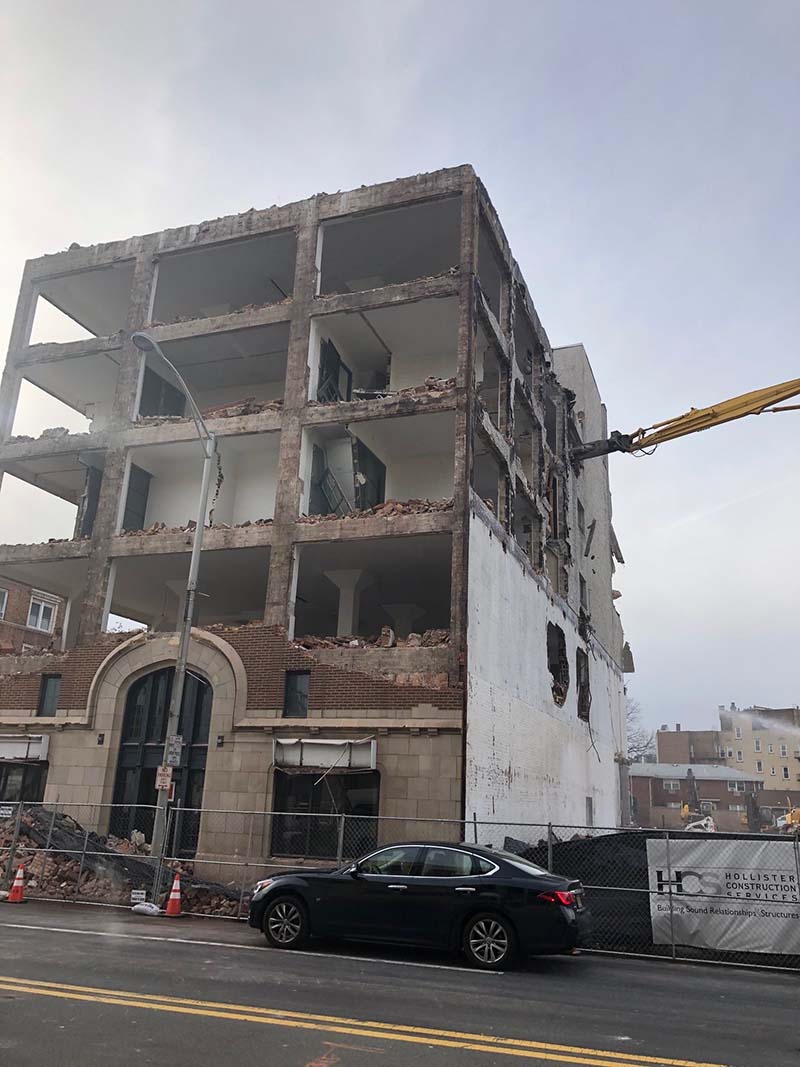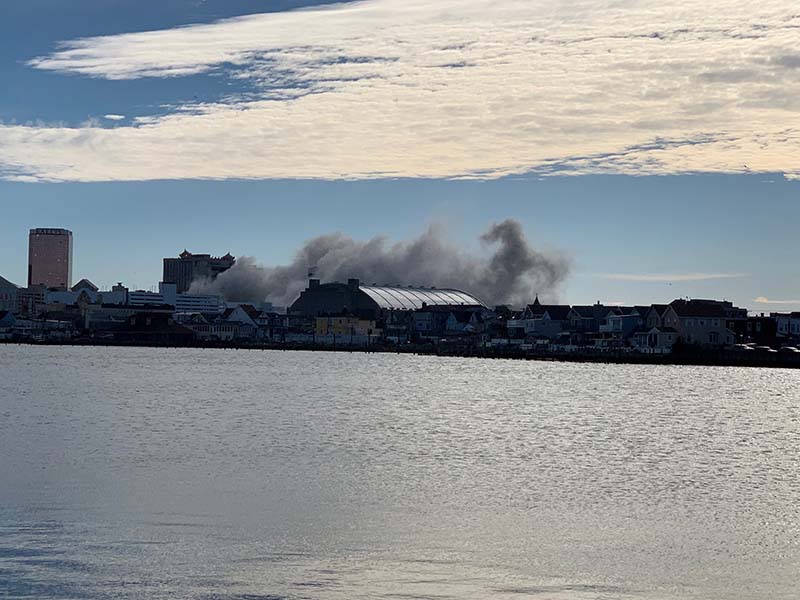THE PROFESSOR ❘ By Glenn Corbett
In the fire service, we deal with buildings from cradle to grave. A building undergoing demolition presents additional hazards and complexities to firefighters, well beyond those found in “normal” building fires. The building can be compromised in many ways as it is being taken down, from structural deficiencies to holes in floors, combustible debris, falling hazards, and countless other problems.
Preplanning Building Demolition Sites
It’s essential that fire departments play a role in the demolition process. Fire codes such as the International Fire Code contain regulations covering items such as on-site access, control of heating appliances, prohibitions on smoking, restrictions on accumulations of combustible debris, control of hot work using torches with associated required fire watches, limits on flammable and combustible liquids, and maintenance of egress components. Of particular note are the regulations dealing with the removal of existing standpipes. Essentially, these systems need to be removed one floor/section at a time, leaving the rest of the system operational.
The code calls also for a prefire plan, typically prepared by the building owner’s “fire prevention program superintendent” in consultation with the fire code official and the fire chief. This is the time for firefighter engagement and participation in understanding the hazards and speaking up about problems that need to be resolved. Be proactive, not reactive. Conduct site inspections during demolition to verify code compliance and to see if new unanticipated problems have arisen.
Photo 1. Perhaps the most disastrous building demolition in recent history involved New York City’s Deutsche Bank, across from the World Trade Center site. A fire occurred during the demolition in 2007. There were many problems—a completely useless standpipe, missing stairwells, negative pressurized decontamination enclosures inside the building, and the lumberyard of plywood sheets enclosing the high-rise structure as seen in this photo, taken years before the fire. Two firefighters were killed in the massive fire that consumed multiple floors.

(1) Photos courtesy of author.
Photo 2. There are oblivious workers at the center of most torch-related fires. A worker is doing hot work on an overhead door track, spewing sparks onto combustibles and into the path of nearby pedestrians. The traffic cone won’t shield them. You won’t find the required fire extinguisher in this photo.

(2)
Photo 3. Although this photo doesn’t clearly show the results of a demolition-related fire, this was a multiple-alarm fire. Rooftop mechanical equipment was initially ignited by hot work. Fire spread from the roof down into the top floor. Fortunately, a quick knockdown by master streams to the roof slowed the fire’s spread.

(3)
Photo 4. Heavy equipment is often used to take down buildings. In this case, an elevated jackhammer takes down a fire resistive building. Note the flow of traffic. Although it’s unlikely this building will collapse into the street, be aware of such possibilities at all demolition sites. You may be dealing with not only the collapse but trapped people on adjacent sidewalks and in roadways. Finally, establish the potential range of smaller falling debris.

(4)
Photos 5, 6. These photos show the explosive demolition of Trump Tower in Atlantic City, New Jersey. These can be the most complicated demolitions, presenting a variety of problems from explosives transport and storage to damage to surrounding buildings, severing utility lines, dust clouds, spectators, and traffic disruption. In this case, the building was brought down into a remarkably small footprint, as seen in the photo. It’s essential that the fire department be at the planning table for all demolitions using explosives.

(5)

(6)
Photo 7. Even after the demolition is complete, hazards remain. This situation is an invitation to children playing in the debris and getting trapped.

(7)
Glenn Corbett, P.E., is a former assistant chief of the Waldwick (NJ) Fire Department, an associate professor of fire science at John Jay College of Criminal Justice in New York City, and a technical editor for Fire Engineering. He served on the Federal Advisory Committee of the National Construction Safety Team and is a member of the Fire Code Advisory Council for New Jersey. He is the coauthor of the late Francis L. Brannigan’s Building Construction for the Fire Service, 6th Edition, editor of Fire Engineering’s Handbook for Firefighter I and II, and an FDIC International advisory board member.

